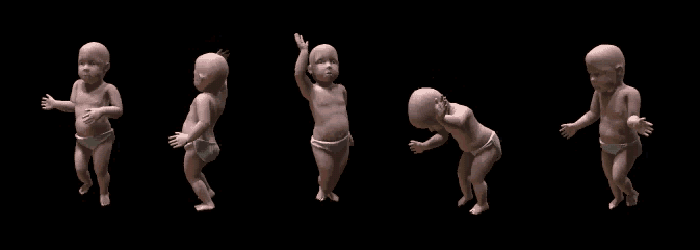It’s almost thirty-years-old. It only supports 256 colours. It’s unsuitable for photographs. It has no sound capability. It’s inferior to its replacement, the PNG, yet the GIF is still hanging in there. Why? Because it can move.
CompuServe introduced the Graphics Interchange Format (GIF) format in the pre-web days of 1987. Steve Wilhite, who invented the format pronounces it JIF, which is madness if you ask me, it’s Graphics not Japhics! The Oxford English Dictionary accepts both pronunciations but according to Wilhite, they are wrong. I agree with Wilhite on this one, it’s clearly a hard G!
Released as a free and open specification for sharing colour images across their network, a GIF supports 8 bits per pixel. This allows it to reference 256 distinct colours, chosen from a palette of millions. Each of these colours is stored in a table and given a value. When neighbouring pixels are the same colour, the run-length is specified followed by the colour value. This is called LZW data compression after Lempel-Ziv-Welch. It means images can be downloaded reasonably quickly, even with slow modems.
GIFs really took off in 1993 with the release of Mosaic, the first graphical browser. Mosaic introduced the tag, which supported two formats, GIF and a black and white format called X BitMap (XBM). Mosaic became Netscape and as it grew, the GIF grew with it.
In 1994, Unisys declared it owned the patent to LZW compression and that developers would have to pay a license fee to use their algorithm. This caused outrage. It turned out the patent covered the software that made GIFs, not the files themselves but it was enough for a working group to come up with a new format, Portable Network Graphics. The PNG was adopted by the World Wide Web Consortium (W3C) as a standard. The GIF looked doomed. Then in March 1996 Netscape 2.0 was released.
Netscape 2.0 supported GIF animations – multiple frames shown in succession. The web went crazy. Suddenly there were spinning logos, animated under construction signs and dancing babies everywhere you looked.
The LZW patents expired in 2004. Since then, MySpace, Tumblr and now Giphy, have attracted a new generation of GIF artists. Called ‘the spirit of the Web’ by GIF artist Olia Lialina, it is the limitations of the GIF that has makes them so attractive. Anyone can make a GIF. Within minutes, an animation can be made and viewed, often without the need to click on a link.
Sometimes the old ways are the best.
This is an extract from 100 Ideas that Changed the Web, available on Amazon UK and Amazon US.



Pingback: My Homepage